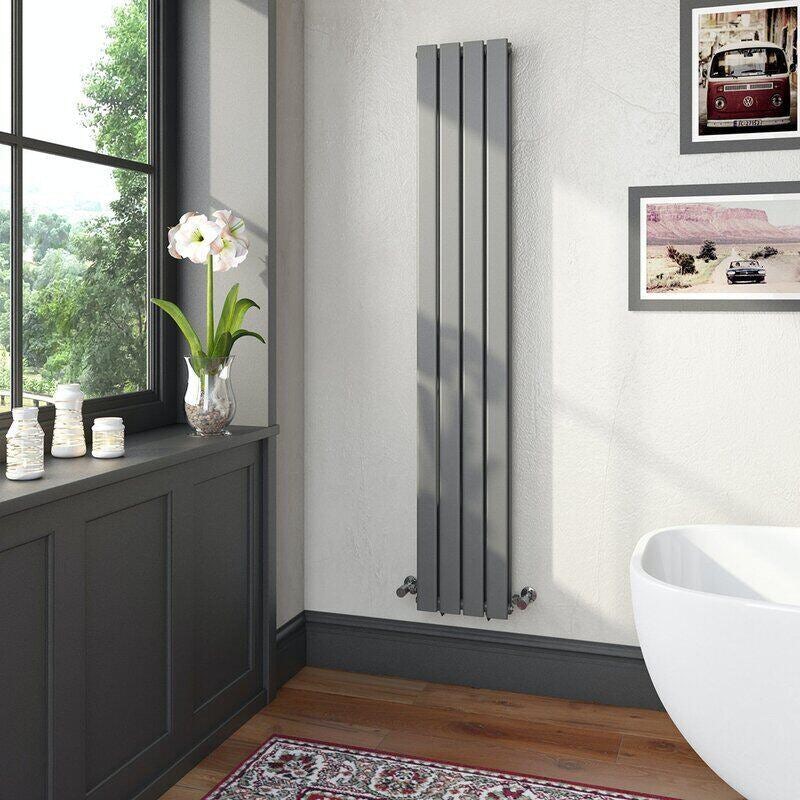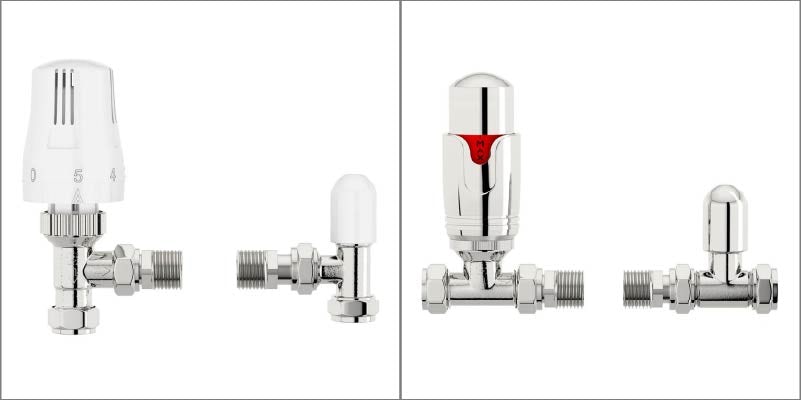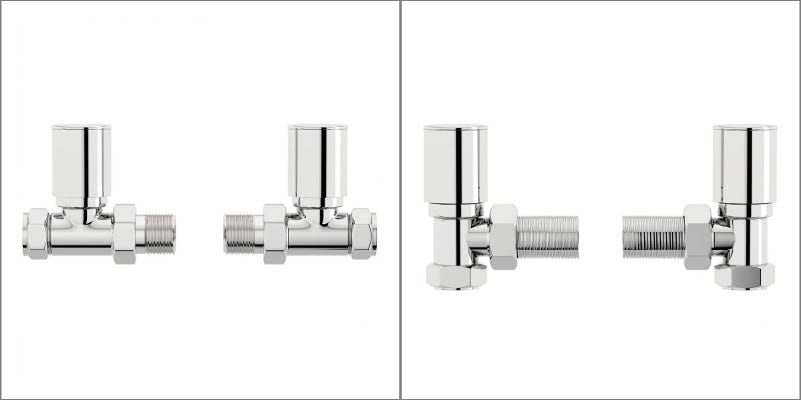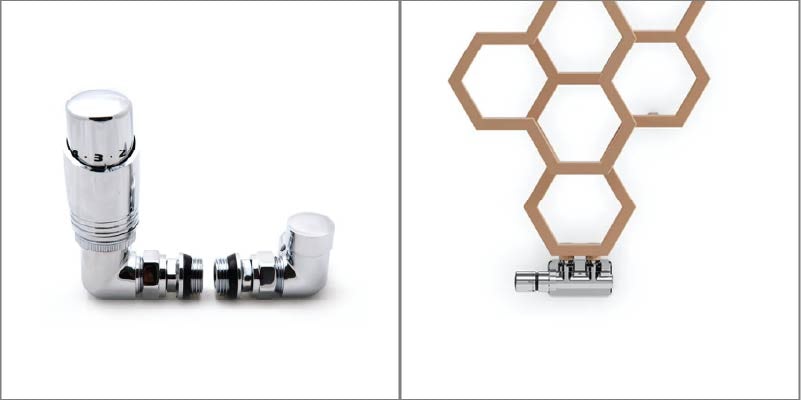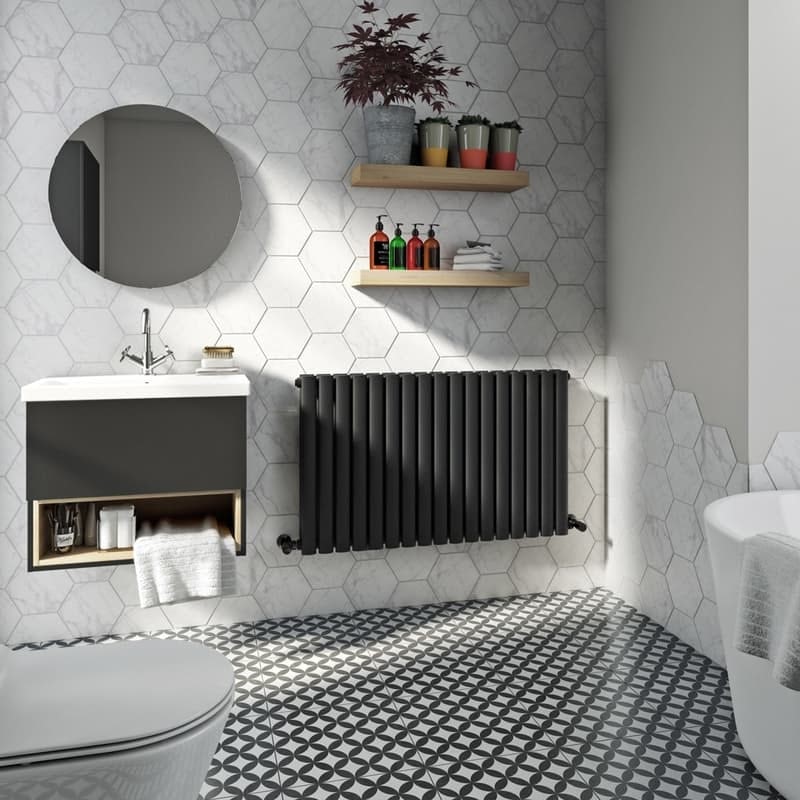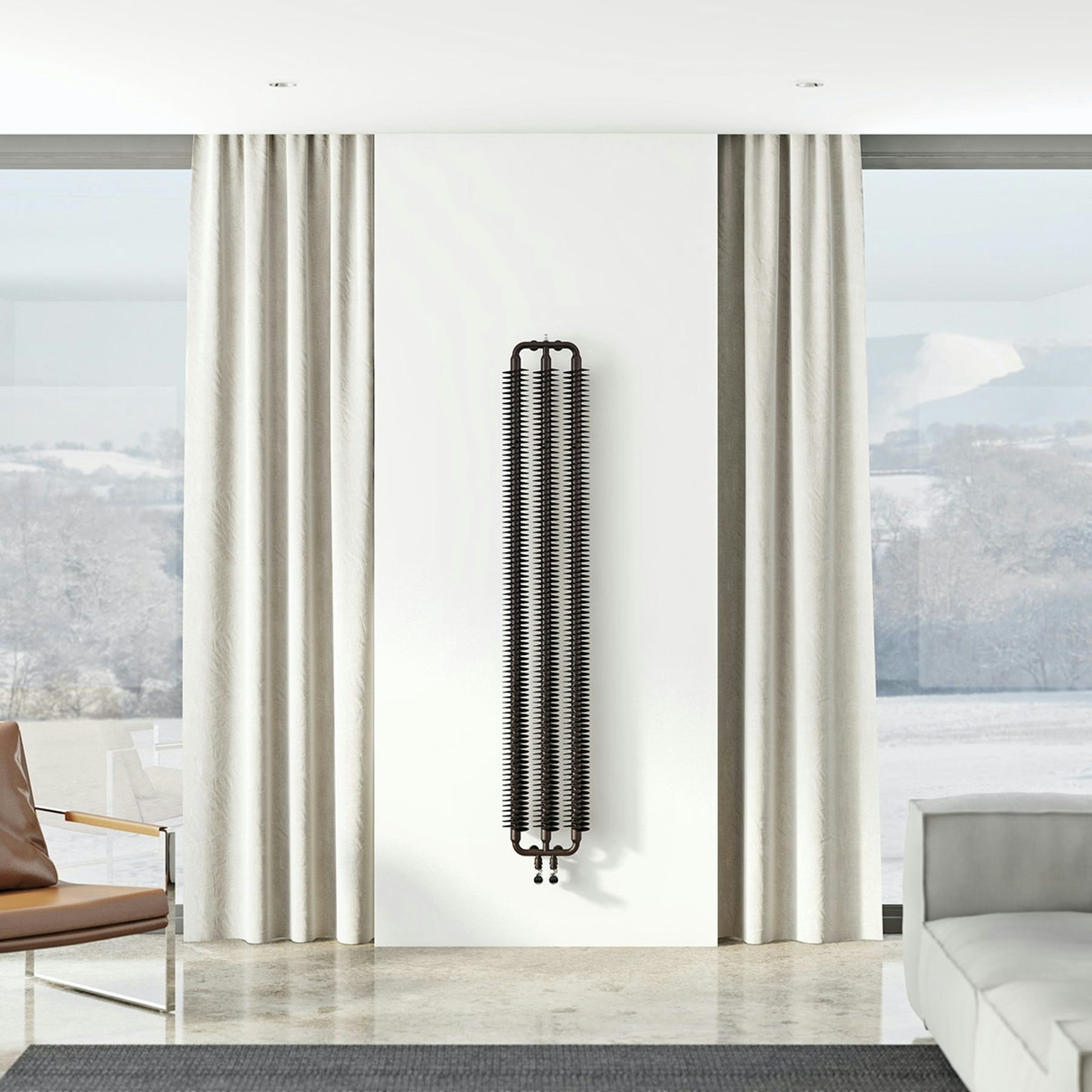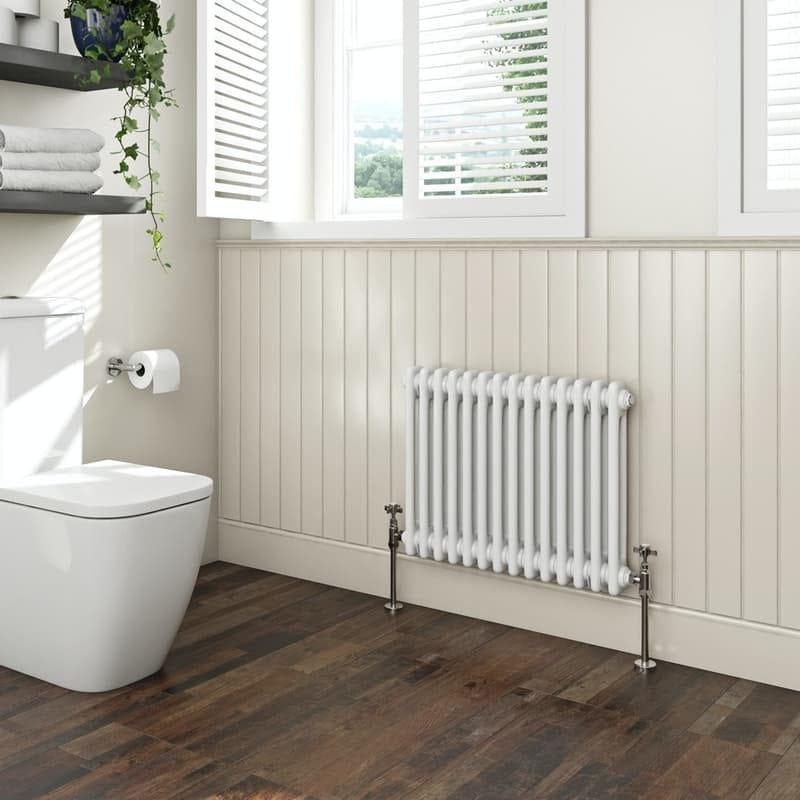You need to be switched on when choosing the right valves for your radiator. So why not turn to our handy buying guide where you’ll find all the help you need.
Are you looking to buy a new radiator valve? With so many valves out there, it's no wonder that some people struggle to know which one they should be using. Whether you urgently need a replacement for a specific unit or want to understand more about radiators and pipework in general, this guide is for you.
We've created this straightforward explanation of different radiator valves. We go over some of the most common types—including corner radiator valves, thermostatic radiator valves, and angled radiator valves. We also explain how the type of radiator and heating system affects which one is best for your needs.
Whether you urgently need a replacement for a specific unit or want to understand more about radiators and pipework in general, this guide is a way for you to learn more.
Carefully chosen valves can really enhance the look of your heating
Are all radiator valves the same?
To put it simply, no. There are so many sizes, styles, and materials for radiator valves. Depending on the positioning of your plumbing system and radiators, not all will be suitable.
To help you choose a valve, we've listed every type of radiator valve and the pros and cons of each. Check out the following radiator designs and choose the right one based on your needs.
What are the major radiator valve types?
There are 2 major types of radiator valves, thermostatic and manual. Each comes in different designs, so read on to discover the ideal design for you.
Thermostatic radiator valves (TRVs)
If you're looking for information on thermostatic radiator valves, you might also see them referred to as “TRVs”. These radiator valves connect to your hot water system and control water flow into the unit to maintain your desired room temperature. Essentially, the valve controls heat in the same way a room thermostat would do. You choose your ideal room temperature and program the TRV system. If the room temperature is over that, the system stops the hot water flow to the radiator. The major benefit of a TRV system is that it ensures your room doesn't get uncomfortably warm.
Pros:
Energy-efficient: You can easily save money on your energy bills with a TRV system as it turns off the hot water when the room temperature reaches your goal. They're great if you're looking for energy conservation.
Optimum central heating: You never need experience the discomfort of an excessively heated or chilly room with a TRV. It keeps the water and room temperature exactly how you like, even when you're not actually in the building.
Cons:
Less control: If you like to have direct control over how much water is in your radiators and pipes, you may prefer a manual valve that allows you to adjust this yourself.
Examples of TRVs (Thermostatic Radiator Valves). Turn the dial on the left to set your desired temperature
Find out how to fit thermostatic radiator valves in our expert guide.
Manual valve
As you probably guessed, manual valves work a little differently from TRVs. They still allow you to have complete control over your central heating and radiators. All you have to do is adjust the valve.
They're compatible with almost every radiator, including copper pipes, cast iron radiators, towel rails and even a designer radiator. You can easily and quickly alter the amount of hot water going through your pipes and the heat radiating from the unit.
Pros:
Full control: Manual valves allow you to turn your water supply on and off exactly as you require and efficiently manage the room temperature. It is excellent if your temperature desires change regularly or if you live in an old house with frequent fluctuations in temperature.
Easy to use: The design of most manual radiator valves means it's easy for a user to find the best way of adjusting the temperature without using a room thermostat or requiring a sophisticated plumbing system.
Cons:
Not automatic: The downside to manual valves is that if you're out of your home for a long time, the radiator temperature won't automatically change. It can leave the area at an unpleasant temperature or lead to high heating bills.
Manual traditional radiator valves are a great choice for vintage style heating
Do all radiators have the same pipes?
It can be hard work to connect your radiator valves to pipes, particularly if they're at an awkward angle. Thankfully, there is a wide range of different pipe layouts you can use.
Straight radiator valve
Straight radiator valves are just as you would imagine—a straight valve. They're ideal if your pipes are at the same angle as your radiator. They have no curves or angles and are designed for a user who has heating pipes running horizontally instead of outside the wall or floor.
Pros:
Easy to use: Because straight radiator valves are horizontal and without any angles, they're easy to install and unlikely to break or see serious signs of wear.
Minimalist design: No need to worry about a cluttered room with this simple solution.
Cons:
Basic: Straight radiator valves are the most basic form of valve. Although this isn't always bad, some people prefer the more high-tech look of valves like H Block.
Angled radiator valve
Angled radiator valves have a bi-directional valve body angled at 90 degrees, hence the name. This is an excellent option if your pipe does not come out of the floor or walls at the right angle to connect easily to the unit.
Angled valves are slightly different from corner valves as angled radiator valves are mainly useful when the pipe is coming from the floor. Corner radiator valves are better for when the pipe is coming from the wall.
If you've never heard of a lockshield valve, you might want to look into these as well. Lockshield valves can also be considered angled valves. They are designed to restrict the water flow to some radiators and keep the heat in the building uniform.
Lockshield valves are usually covered with a plastic cap to prevent people from altering them without meaning to. They're great for families with young children who tend to put their hands on things they're not supposed to.
Pros:
Simple solution: If your pipes are coming from an awkward angle, these valves can ensure you get an ample water supply with minimal hassle.
Range of designs: You can find a range of styles and materials, including lockshield valves, ensuring you can find one to fit the look of your room.
Cons:
Incompatible with some plumbing: An angled radiator valve only works when your pipes are at a certain angle. They are not compatible with all radiator and pipe systems.
Comparing a straight radiator valve (left) with an angled radiator valve (right)
Corner valve
Corner radiator valves are different from straight radiator valves as the valve inlet and outlet are at a 90-degree angle. The design allows the pipes to run straight from the radiator into the wall without any plumbing items sticking out or taking up wall space.
Pros:
Neat and tidy: The chic design of corner radiator valves ensures that no unsightly pipework sticks out to ruin the ambience of your room. It is perfect if you like stylish surroundings or need one installed at a site where interior design is of the highest importance.
Wall space: These valves can slot straight into your floor or through a small hole in your wall. They take up as little room as possible compared to other valve types.
Cons:
High price: Although corner valves are usually a reasonable price, you might end up paying a little extra if you want premium side inlets. However, they tend to make up for it by being long-lasting and efficient.
H block valve
These values get their name because they are shaped like the letter H. They're best for radiators with central or middle connections, as they have a double connection that joins the pipes and valve inlets. You can find angled or straight H Block valves depending on the angle of your pipes.
Pros:
Easy to install: The items connect to the centre of your radiator rather than either side. This makes it simple to install in comparison with other varieties.
Utilises space: The great thing about H block valves is that you don't have to deal with complex, unsightly connections. The top of the valve is positioned horizontally, meaning you're less likely to injure yourself on it.
Cons:
Expensive: Because these valves are so useful, they tend to be more expensive than other varieties.
Examples of a corner radiator valve (left) and an H block radiator valve (right)
Buyers guide—How do I choose a radiator valve?
Now that you know the different kinds of radiator valves, you're probably trying to decide which is best for you. To help you with this decision, we've created a list of essential things to consider when purchasing a radiator valve.
Material
You'll want to order a material that works with your existing pipe and room decor. Although you can use items like pipe sleeves to make return pipework fit with your room, choosing the right material in the first place will make your life easier.
For example, copper pipes and brass valves go well if you want a vintage vibe.
Here are some other options to consider:
- Steel
- Cast iron
- EPDM rubber
Sizes
Your radiators valves may not all be the same size. Precise measurements ensure you don't accidentally purchase a valve that's not compatible with your pipe sizes and other plumbing. It's easy to get exact measurements with a tape measure or ruler.
Pipe layout
Customers should always consider their room layout and plumbing when choosing a valve for a radiator or towel rails. Corner valves or an H Block work great in some settings. However, if your plumbing is at an awkward angle, this may not work best. Make sure you have a valve that will connect your radiator to your pipework.
Frequently Asked Questions (FAQs)
You're probably an expert by now after reading this guide to radiator valves, but just in case you still have some queries about the type of pipes or valves you need, we've collated some of the most asked questions. Just read on for everything you need to know about radiator valve types and how to choose the right one for you.
Do designer radiators need different valves?
Unless you have a very rare type of designer radiator, you are unlikely to need different valves from anyone else. However, if your radiator does appear significantly different from other models, you could contact the company that you bought your radiator and central heating pipes from to confirm that you do not have to order a specific type of valve.
Do all radiator valves fit all radiators?
Not all radiator valves fit all radiators. Although most pipes are 15mm, this is not always the case. You should contact a professional for more help if you're unsure. Message the person who fitted your pipes if possible, as they should have recorded the valve type and pipe size.
Can I use radiator valves for my towel rail?
Although towel rails are different from most of the radiators you use to heat your home, you can still use radiator valves with them as long as they use hot water. However, some types of radiator valve are less effective with heated towel rails.
For example, thermostatic radiator valves are usually not the best option for a towel rail. The device does not heat your home in the same way as traditional radiators. Often an angled radiator valve or manual radiator valves are the best options for towel rail pipework—although this depends on customer preference and item design.
What are the best radiator valves?
The answer to this question depends on the kind of radiator you have and how much control you want to have over your energy consumption and water supply.
For example, if you want a lot of control over the amount of water in your radiator pipes, using manual valves is a great way to ensure that. However, suppose you want a reduced heating bill and are not in the building where your radiators are for most of the day. Thermostatic radiator valves will work with your thermostat to keep the amount of heat in your room and pipework consistent without you needing to be there to adjust it yourself.
Our verdict: Should you buy a radiator valve?
Radiator valves are essential if you want the most efficient control of the temperature in your home. We think every homeowner should have a brand new radiator valve that's compatible with their interior design.
Keep this guide in mind as you shop for the best radiator valve for your needs. Remember that you have multiple options when it comes to hot water control (TRV vs. manual), pipework (straight, angled, etc.) and materials. Now that you've read this guide and know all about the different types of radiator valve and how to choose the best one for your needs, you'll have enough information to make the right decision. The only thing left to do is pick your perfect valve and enjoy a more modern and efficient heating system.
More advice on home heating
Here at Victoria Plum, it’s our mission to help you keep your home both warm and stylish. We offer loads of handy, helpful, expert advice on heating, including buying guides for radiators, heated towel rails and underfloor heating. If you’re looking to “do it yourself”, you’ll find practical installation guides too (although, we’d heartily recommend employing an experienced professional tradesperson to deal with any plumbing or electrics in your home).
Shop radiator valves
We supply a wide range of beautiful radiator valves to fit a huge variety of radiators and heated towel rails. From elegant traditional models to designer valves, you’re bound to find exactly what you’re looking for at a great price. Simply click on the image below to begin browsing.

